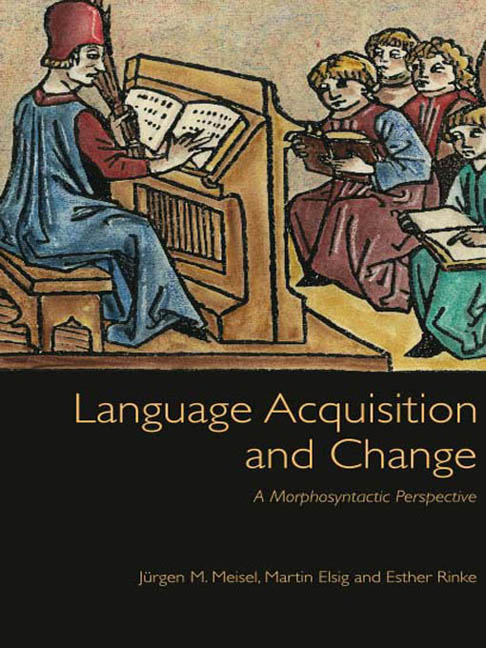Book contents
- Frontmatter
- Contents
- Preface
- Abbreviations
- 1 Variation and change in languages
- 2 Language change across the lifespan
- 3 The child as the locus and agent of grammatical change
- 4 Structural ambiguity as a possible trigger of syntactic change
- 5 Language contact as a possible trigger of change
- 6 Acquisition in multilingual settings: Implications for explanations of change
- 7 Towards an explanatory theory of grammatical change
- 8 References
- Index
4 - Structural ambiguity as a possible trigger of syntactic change
Published online by Cambridge University Press: 07 December 2017
- Frontmatter
- Contents
- Preface
- Abbreviations
- 1 Variation and change in languages
- 2 Language change across the lifespan
- 3 The child as the locus and agent of grammatical change
- 4 Structural ambiguity as a possible trigger of syntactic change
- 5 Language contact as a possible trigger of change
- 6 Acquisition in multilingual settings: Implications for explanations of change
- 7 Towards an explanatory theory of grammatical change
- 8 References
- Index
Summary
If we relate syntactic change to child language acquisition, we need to identify possible factors that trigger a reanalysis of the input. In generative theories, ambiguity has been argued to be such a triggering factor, and it has been attributed a central role as a possible cause of diachronic change. In this chapter, we will discuss some of these proposals and their application to a specific case of syntactic change, namely the loss of verb-second placement in Old French. We will show that the assumption that structural ambiguity is the principal cause of word order change in the history of French is problematic from an empirical as well as a theoretical perspective. We will further discuss principled arguments against parametric ambiguity as a useful concept for the explanation of syntactic change.
Section 4.1 introduces the notion of structural ambiguity and contrasts it with parametric ambiguity as it is generally understood in theories of language acquisition and diachronic change. Section 4.2 presents a number of generative proposals that refer to parametric ambiguity as a possible source of diachronic change (e.g. Clark and Roberts 1993; Kroch 2001; Yang 2002; Roberts 2007). Since the loss of V2 properties in Old French has played a central role in contributions aiming at supporting the claim that ambiguous input is an important trigger of diachronic change, we will take a closer look at this phenomenon. Section 4.3 provides arguments against parametric ambiguity as a driving force in diachronic change. Section 4.4 concludes this chapter.
SYNTACTIC AMBIGUITY AND DIACHRONIC REANALYSIS
Syntactic ambiguity generally refers to syntactic structures whose surface properties allow for more than one interpretation. Sentence (1), for instance, is a classic case of ambiguity, because it can be assigned two different meanings:
(1) I saw the boy with the binoculars.
(1) can be interpreted either as meaning that the boy has binoculars ([the boy [with the binoculars]]) or as stating that the speaker has binoculars ([saw [the boy] [with the binoculars]]). The ambiguity of (1) results from the possibility of interpreting the PP with the binoculars either as being an attribute to the noun phrase the boy or as an adverbial phrase adjoined to the main clause.
- Type
- Chapter
- Information
- Language Acquisition and ChangeA Morphosyntactic Perspective, pp. 73 - 95Publisher: Edinburgh University PressPrint publication year: 2013

